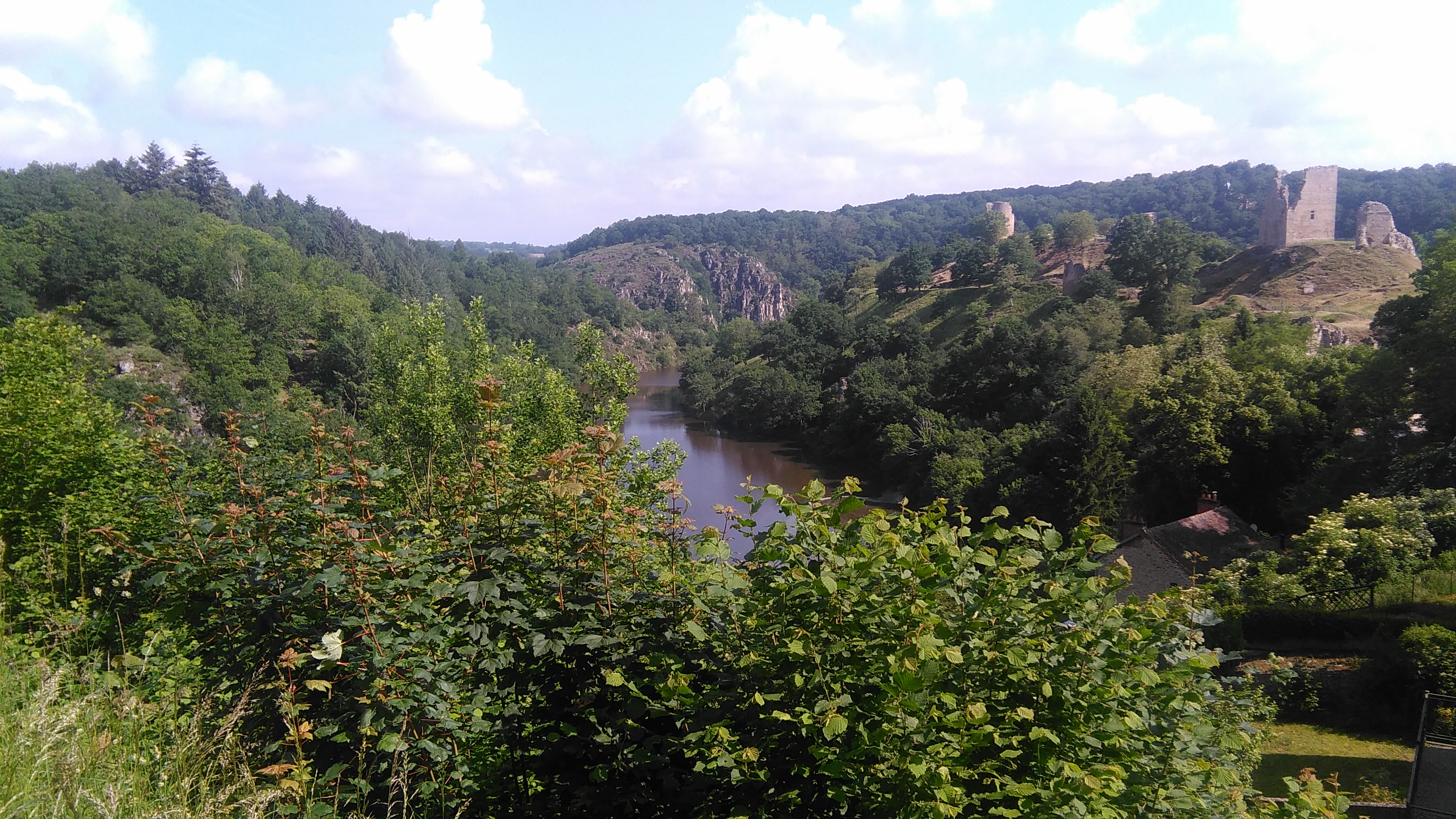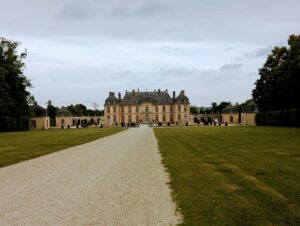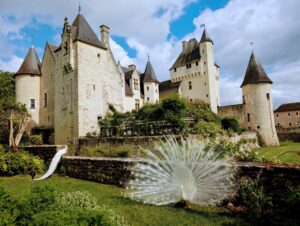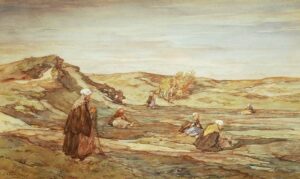An introduction to the masters of the Creuse Valley

In the nineteenth century, as artists come out of their workshops to focus on painting outdoors, and travel Europe in search of reasons, the “workshop” of this Creuse Valley, has become a real artistic agora, a place of intense creation where several artists’ colonies were forged but not necessarily regionalist since the Swedish painter Österlind, appears like the most exotic painter among the 4 exposed painters who found the inspiration in this valley, like major site among others all throughout their career, as places of their favorite motives or pictorial revelation. By AP
Such an artistic journey based on the banks of a river with lively forces has attracted a slew of artists for an exceptional production of thousands of original works of impressionist inspiration.
An exhibition-course, between Berry and Limousin, centered on 4 migratory artists brought back to the fore with the help of nearly 250 works and documents, most of them unpublished, in 4 renowned museums established near this itinerary mythical, spanning from May to September 18, 2016.
– Alfred Smith, Museum of Art and Archeology, Guéret.
– Allan Österlind, Château d Ars Museum, La Chatre.
– Charles Bichet, Museum of Fine Arts, Limoges.
– Eugene Alluaud, Museum of the Valley of the Creuse, Éguzon.
With a starting point estimated at 1832 for the first sketches of a current that will be called the painters of the “Crozant School” as to adorn a noble region a region that has indulged in one of the richest regional figurative collections, and which reached its peak between the 1880s. To finally fall into oblivion at the dawn of the 1930s with the advent of contemporary painting.
A real lasting local emulation was formed around the inns and “villas” where the artists were lodged and took advantage of these places of life, often represented in their works, for endless exchanges on techniques and surroundings worthy of interest; while punctuating their evenings with puppet shows so dear to George Sand and his son Maurice.
An artist by calling another and it was thus many artists of origin and various specialties who succumbed to the light of these landscapes nestled between the accentuated reliefs of the valleys of Creuse, Sédelle, Gartempe or the Vienna.
Indeed, people come to see the landscapes described in the novels of George Sand, including Gargilesse she compares to a small Fontainebleau, where we still find today its former home turned into a museum near the castle Gargilesse, whose owner Annick Thevenin is also a painter who exhibits both his works tinged with mist and those of famous artists of that time. It organizes many more events like the evenings “Female Authors” featuring famous actresses, taking place every year, in this building particularly neat in every nook and cranny.
Also noteworthy is the presence in this same village tinged with this creative spirit, Catherine Liénard’s inescapable restoration workshop “L’Encadrerie”, giving a real makeover to these long-distance works.


Interior of the Château & Gallery of Gargilesse (credits: AP)


Inside the castle, including two paintings illustrating the Valley of the Creuse of the painter Paul Madeline.
Among the emblematic sites that have served as models, one particularly attracts the attention of the visitor since he will give the name to this artistic trend, namely “the school of Crozant”.
The ruins of the Castle of Crozant is a “site of a romantic power and hugolienne”, with clear colors, according to Christophe Rameix, expert and author of several books on this period.
Former medieval fortress dismantled by Cardinal Richelieu in 1632, visited in his time by George Sand and Frederic Chopin and very early attended by a quality tourism and Paris, the same who took up residence in Étretat among which hundreds of artists outdoor and conquered for pictorial reasons.
While the landscape was a secondary reason and had to be “more beautiful than the real”.
Monet also created a series in 1889. Armand Guillaumin, a forerunner of impressionism and tawny and arbitrary colors like pink on the rocks and purple on the water, which he punctuated his most violent colors.


Views on the ruins of the Crozant Castle (credits: Alex Plato)
Allan Österlind, Château d’Ars Museum, La Chatre.
This Renaissance-style castle, which served as a stage for George Sand’s novel novel “These beautiful gentlemen of Bois-Doré” is the place of regular events, whose exhibition, supervised by its director Annick Dussault, brings to light the artist Swedish, native of Stockholm, Allan Österlind.


Château d’Ars (credits: AP)
In the aftermath of the 1870, and an anti-German feeling is forged in Scandinavia and so many Swedes are turning to France.
Territory where his two favorite regions were the Valley of Creuse and Brittany whose island of Bréhat between some escapades in Paris, where he led his bohemian life during which he made a specialty of painting, by way of payment, on the doors, glasses or plates of the inns in which he was staying in exchange for hospitality and thus to avoid his frequent worries of money. Hostels where artists met with glasses of absinthe and shared the best motifs to paint; it will be especially the sign of the “Rabbit Agile” in Montmartre.
Originally a sculptor, he shared his Scandinavian network with Rodin.
Throughout his work, he will seek to transcribe events of the daily life of his contemporaries with frequent plays of light or even scenes of dance, in particular in Spain made in aquatint, otherwise called etching, for a high-end design of the print. Moreover, each aquatint is different from the others, an original work with each production and reproduced in several copies by publishers such as Pierrefort or even Sagot, except that Österlind also had its own press.
 Allan Österlind “Rollinat and his dog”, 1898 (Photo credits: Alex Plato)
Allan Österlind “Rollinat and his dog”, 1898 (Photo credits: Alex Plato)
Similarly, the landscapes of his rural scenes are melancholically inspired by Scandinavian tales and legends such as the representation of the Legend of the Charmer of Rats in 1897.
There was also a passage by Art Nouveau movement (“The Virgin”, 1900) for this artist who has never ceased to renew itself, and whose flagship work represented for instance the Symbolist poet Maurice Rollinat, who exiled in Creuse after the unexpected success of his work “Neuroses”.
Let us remember that a dynasty of artists followed the posterity of his work since his son Anders Österlind and his grandson Nanic Österlind took over his Art in their own way.


Scene of life with the “Servants” of Österlind, 1913. / Testimony of a Nordic colleague who followed Österlind in Creuse, “the sun on the snow Gargilesse” by Gustav Albert, 1894.
Alfred Smith, Museum of Art and Archeology, Guéret.
The Museum of Art and Archeology of the City of Guéret, mansion built in the 18th century, located on the Présidal of the town, was the residence of Senator Justin Bonaventure.
Building housing a multidisciplinary collection including the current exhibition of fifty works (half from the Museum of Fine Arts in Bordeaux) the great painter Bordeaux Alfred Smith, student of Léonce Chabry and Hyppolyte Pradelles, both past by the Barbizon school among confreres like Alfred Roll, with a correspondence kept in Los Angeles.
A style evolving through the years and according to his stays in Paris, Venice where he was staying quai des Esclavants because of his easy way of life, coming in good part from the good performance of his paintings sales.
He will not forget Bordeaux because every year he will send works to the Salon des Amis des Arts, it is thanks to this event that he will arrive in Paris.
Following the 1905 Fall Salon in Paris, and the advent of the wild beasts, he discovered Crozant in 1912 and from 1914, he would send works only from this region which he is seduced by the atmosphere. Like many of Crozant’s colleagues, he was inspired by the pictorial photographic framing. Moreover, he will remain faithful until the end of his life, in 1936 by producing nearly 200 works.
Many mix tables mixing wax, dry pastel, pastel gras, making the restoration complicated for paintings mostly painted in the summer who traveled and accompanied by critics.
To know that with an acquisition budget of 15,000 euros and privileged on the restoration, the Guéret museum has little room for maneuver but benefits from donations and deposits.


“Sédelle Valley (autumn)”, 1929 / “Sédelle in October in Crozant” (1923). Wild tones highlighted by Alfred Smith to represent the Valley
Charles Bichet, Museum of Fine Arts, Limoges.
“Volume, light, color” summarizes the work exhibited by Charles Bichet at the Museum of Fine Arts in Limoges (created in 1845) wishing to present his fund of a hundred works of his collection (50% acquired from the collector Arsène Carat, and the rest in the Dubouchet fonds).
Major artist of Limoges because teacher of the School of Decorative Arts of the city and having trained many artists, since he himself raises his counterpart in Paris with as teachers Victor Ruprich (specializing in ornaments and author of the book “Ornamental Flora”, 1876 which will inspire his floral work) and Edmond Lechevallier-Chevignard.
Winner of the Adrien Dubouchet prize in 1883 for a gardener’s drawing, which launched its fame and whose porcelain work was exhibited during the 1889 World’s Fair.
In 1890 he moved to Limoges spotted for his talent.
His arrival in Impressionism was a shock to him. A change that will anchor in him thanks to Paul Thomas who will help Bichet to become aware of its value.


Typical landscapes of undergrowth on the edge of the Moulin de la Folie (CR: AP)
A pastel artist.
The artist believes that oil painting is not a fast enough technique to allow him to express himself fully in a limited time.
This is how he turns to the work of pastel, a medium perfectly mastered by Armand Guillaumin, from which he is inspired.
Free artist, passionate going to self-destruction, since he was pushed to operate a burning of a hundred of his old works and thus deny his past in 1910.
After the Impressionism, he will be interested in the techniques of his time with the exploration of external currents like japonism, innovative like the fauvism or cubism of Picasso, where he draws different techniques (touch, polychromy, support).
He will remain close to his students until the end of his life, to the point of feeding his latest works of figurative inspiration…


“Crozant, the ruins side of the Creuse, the morning” by Armand Guillaumin, 1897 / “The Pillars of Lascoux in Chateauponsac” (around 1907-1913), an extension of the Valley and rocks that survey it seen by Bichet (Photo credits: Alex Plato)
Eugene Alluaud, Museum of the Valley of the Creuse, Éguzon.
A stone’s throw away from the famous Moulin de la Folie and the Hôtel Lépinat, the birthplace of the artistic effervescence and remnant converted into an interactive museum, reminiscing about the rich history of the region, is the Vallée de la Vallée museum. from the Creuse to Éguzon, located in the old stables of the castle of Éguzon, and was visited in his time by the industrialist, at the same time artist-painter and collector, Henri Rouart.
 “La Sédelle en Mai”, 1906 by Eugène Alluaud.
“La Sédelle en Mai”, 1906 by Eugène Alluaud.
Under the guidance of the Art Historian, Jean-Marc Ferrer, the Museum traces the whole of the work of Eugene Alluaud, “the child of the country”, revealing artist of this post-impressionist movement that exposes in Paris (Autumn and Independent Salons) supported by Jean Giraudoux in particular and he was acclaimed by the Parisian critics including the demanding Louis Vauxelle.
Settled in Crozant in 1891 in this village where there were 6 hostels full of artists who favor the period from August to October for the tranquility of painting, with such artistic density that visitors could find no place in an inn within 30km to the round.
He has devoted himself to painting, ceramics (with the famous animal sculptor Paul Jouve and landscapes of Crozant on porcelain) and photography, posters promoting tourism in the Creuse, like an arts collector valuing in several media .
In the end, a catalog of more than 400 titles of works of landscapes of which 60% made in the Valley of the Creuse and the rest in the Pyrenees. Become master of the light which he excels to figure under the mist in full clarity, all with tawny tones.
Many influences will then punctuate his career as the representations “pissariennes” of Paris or the private gardens of his bourgeois friends.
He returns to twilight precision at the end of his career and with larger formats.









1 thought on “An introduction to the masters of the Creuse Valley”